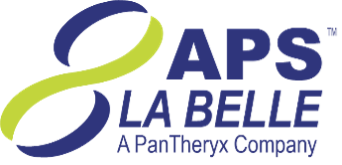“New frontiers in calf and heifer nutrition – From conception to puberty.” Journal of Dairy Science, Vol. 104, No. 8, 2021.
This article, written by researchers from the University of Guelph and Trouw Nutrition and which won the ADSA Foundation Scholar Award, explores the knowledge gaps in the different stages of calf development by summarizing the key concepts of nutritional physiology and programming from conception to puberty and their subsequent effects on development of the calf and, ultimately, future performance. The authors indicate that during fetal development, developmental plasticity (DP) is highest.
They define DP as the ability for the same genotype to produce different phenotypes through epigenetic regulation and that, in animals, DP begins, and is most dynamic, at conception, which suggests the periods before and after calving have the greatest potential for nutritionally programming the calf. As the calf ages, DP gradually decreases. Despite the importance of this very early window, the authors say this field of research has only recently gained research interest. At this time, maternal energy and protein consumption can influence fetal development, likely playing a critical role in calf and heifer development. Similarly, they add, optimal nutrition during the pre-weaning period is vital. Pre-weaning calves are highly susceptible to health challenges, and improved calf growth and health can positively influence future milk production.
The authors divide the article in different phases, namely prenatal, neonatal, colostrum and post-colostrum and transition milk feeding, pre-weaning period, weaning period (namely weaning strategies and solid feeds) and prepubertal and postpubertal phases. For each phase, they indicate the current knowledge and industry strategies – and then, what makes this article very interesting, they indicate future directions in terms of research and/or recommendations. They summarize that several knowledge gaps remain, namely related to nutritional management in each developmental phase.
These gaps limit the potential to developmentally program calves in early life to increase productivity and health. They say expanding our understanding on energy and protein dietary requirements and composition will ultimately improve calf growth and development. As such, there is a strong need to integrate this dietary knowledge with health research to reduce incidences of disease in calves.
There are nutritional as well as feeding and management strategies that influence fetal and calf development and growth, and a good understanding of these aspects is needed. However, what makes this research difficult is that each life stage may or may not have carryover effects or lead to different long-term outcomes or both. Therefore, it is important to continue pursuing research investigating optimal nutritional strategies to improve calf performance and health without compromising cost efficiency.
“Views of American animal and dairy science students on the future of dairy farms and public expectations for dairy cattle care: A focus group study.” Journal of Dairy Science, Vol. 104, No. 7, 2021.
In this article from University of British Columbia researchers, the authors aim to better understand student views of the future of dairying, including changes in practices affecting animal care on farms as well as perceived public perceptions. Since these students completing advanced degrees in dairy or animal science may go on to have a major impact on the food and animal industries, it’s interesting to have their perspective on these areas. For the study, they conducted six focus group sessions with 45 undergraduate students enrolled in the 2019 U.S. Dairy Education and Training Consortium.
The authors say that in recent years public interest in the care of farmed animals and the naturalness of food products has been growing and that, compared with other livestock industries, the dairy industry has received less attention and has a more positive public image. Nonetheless, they continue, to maintain public trust, agricultural industries – including the dairy sector – must conform to widely held public values, including those around animal care. They define public as people who are not involved in the dairy industry, who are often unaware of the specific practices associated with dairy farming. Still, because of their potential to influence the demand for specific food products, public views, concerns and preferences should be taken into consideration.
There are often disagreements between stakeholders within the livestock industries in terms of their view of the industry (placing higher relevance to the biological functioning of the animals) and the public, which may be more concerned about the animal’s ability to perform natural behaviours. The authors indicate that people working within the agricultural industry may have difficulties in accepting public views as valid and instead consider these objections a reflection of public ignorance about modern farming methods. This, they say, suggests a disconnect between the importance of accounting for interests of members of the public and the ability of industry stakeholders to do so. This disconnect is what motivated this study, in the sense that future generations of agricultural professionals could be better trained to consider a diversity of viewpoints and inform new curricula to help students become critical thinkers and leaders in their field.
The study identified three themes: “must-haves” at the farm level (according to the public), interaction between the public and the dairy industry, and support and joint effort to align the dairy industry with public expectations. Regarding the “must-haves” at the farm level, among several interesting findings, the students identified technology and automation of farm processes as major “must-haves.” The emphasizes in technology were related to its ability to identify problems in cows sooner than with traditional methods, linking this to animal welfare. The consistency of animal care that automation can provide was also highlighted. Still, interestingly, the students were uncertain how the public would perceive increased automation, with some noting that animals need human contact, love and affection.
There are much more interesting aspects in this study, but in concluding, the authors say the students often failed to distinguish between the “must-haves” that promote animal health and welfare, and changes in animal care practices for the purposes of meeting public expectations. This finding highlights the complexity of the issue and the perceived influence the public has on the future of the dairy industry. As such, students emphasized the importance of accounting for values held by members of the public to ensure continued support of the dairy industry by the public. Although the need for compromises was raised, students believed that educating the public was necessary (and sufficient) to align public expectations with dairy industry practices.
This column brings you information regarding some of the research being done around the world and published in the Journal of Dairy Science. The objective is to bring to light areas of research that may have an immediate practical application on a dairy farm, as well as research that, even though it may not have a practical impact now, could be interesting for its future potential application. The idea is to give a brief overview of select research studies but not go into detail on each topic. Those interested in further in-depth reading can use the citations to find each study.








